The second part of the Hall-Wynne building (the two connected at the back, along Manning Place) was also built between 1907 and 1913. This building was the stable building for the funeral home.
Looking north-ish, 1910. The picture is a bit odd as they have 'edited' out the background (which it appears consisted of small frame structures from the pieces the printer couldn't edit out.)
I believe that this became Penny Furniture once Hall-Wynne moved to West Main St. in 1926. This somewhat damaged picture shows the front facade of the building and the building immediately to the east during the 1920s.
(Courtesy Duke Archives)
Notice the central, arched first floor entryway with flanking arched windows. It's possible, with the size of the front entryway, wide enough to acommodate a carriage.
100 Block of East Chapel Hill, looking west, 1945.
(Courtesy Herald-Sun)
By the 1960s, the first floor had been opened up, and the windows bricked up.
Looking northwest, 1966.
(Courtesy Durham County Library)
(Courtesy Durham County Library)
By the mid -1980s, the city had decided to create the convention center/Omni hotel and close Roney St. in front of the Carolina Theater. The building just to the east of the Penny Furniture building was demolished (as were all of the other buildings along the northern side of Chapel Hill St, up to Foster St.)
The city bought the building at the northeast corner of Morris and Chapel Hill St. (previously profiled) as well as the building to its east during the 1980s and renovated them. The Excelsior barber shop moved to this building.
I'm not sure when Penny Furniture closed up shop, but the building languished until quite recently.
Empty Penny Furniture building, 1990s.
When it was purchased and restored, which started with removal of the 1960s facade covering.
... followed by re-creation of the second floor windows and rejuvenation of the painted sign on the front. Modern elements generally complement the historic character of the building, although something about the cornice looks a bit odd to me. Having this building 'back' is a welcome return to the downtown landscape.
looking northeast, 2007.

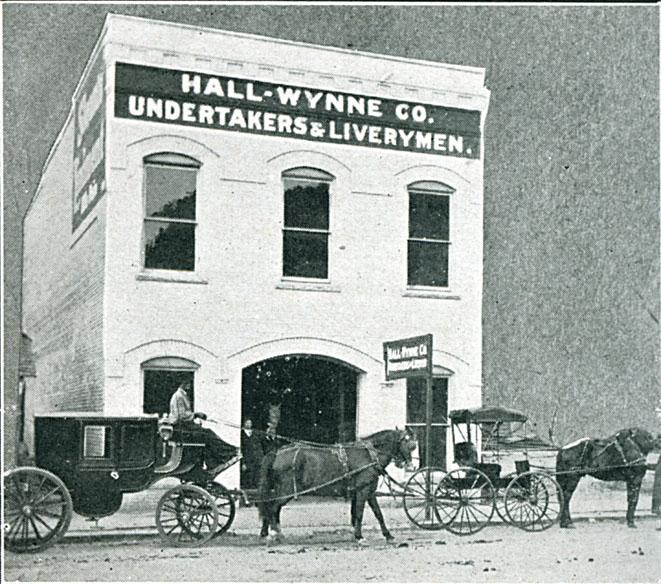
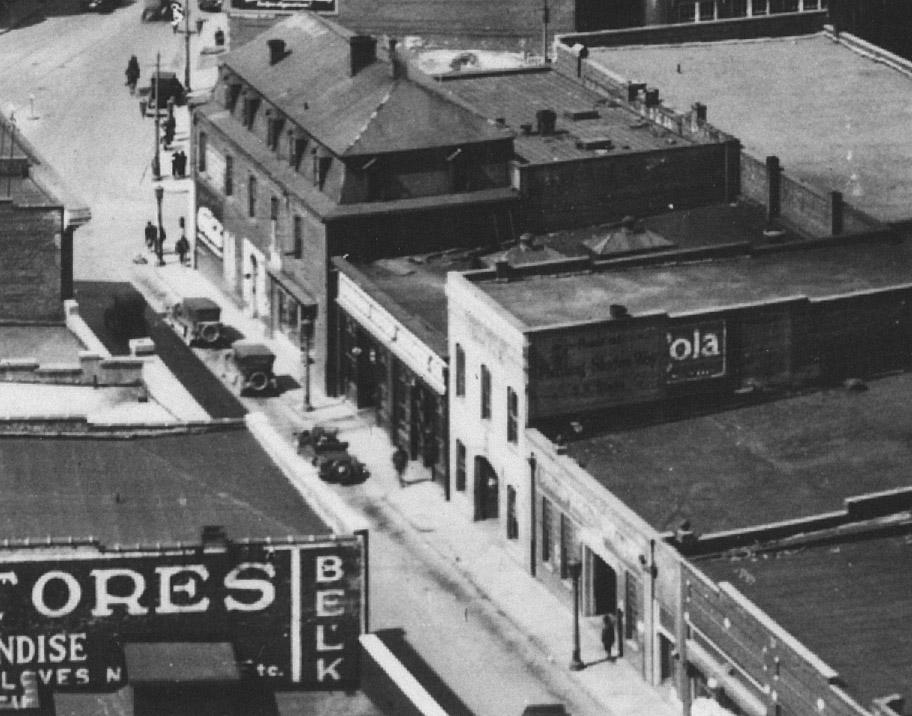
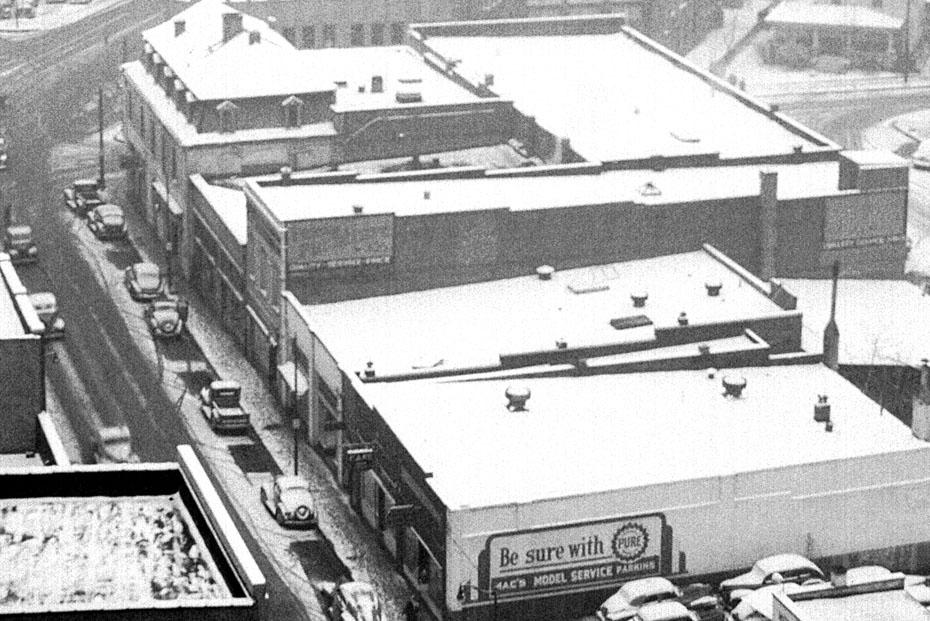
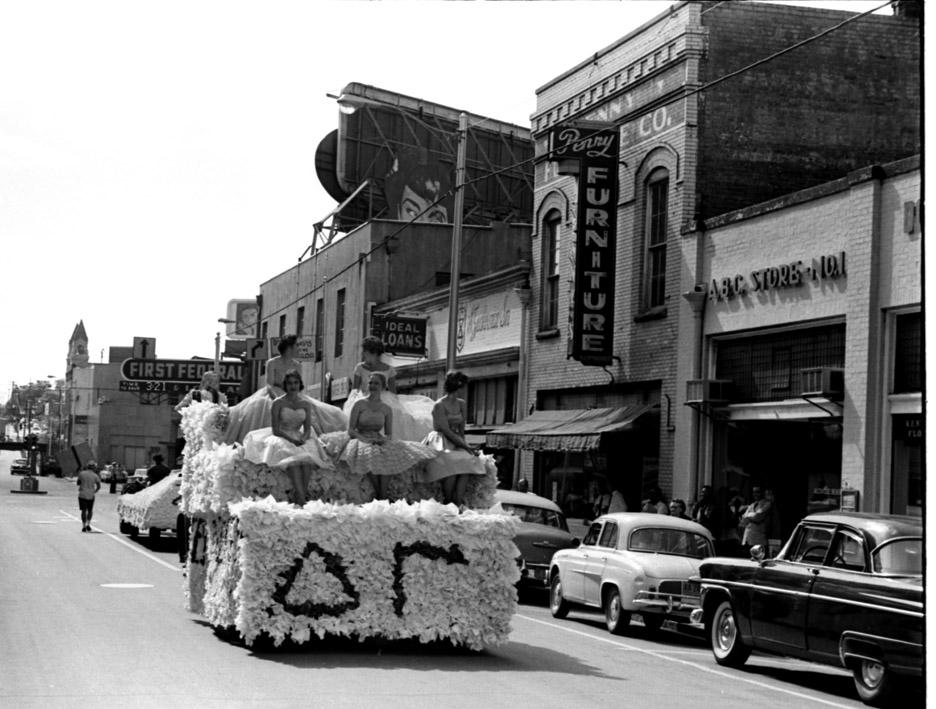

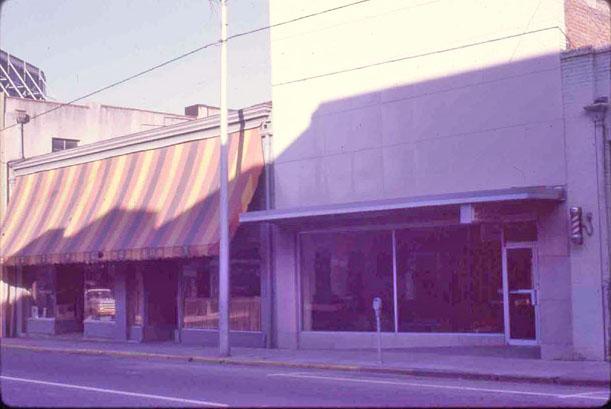
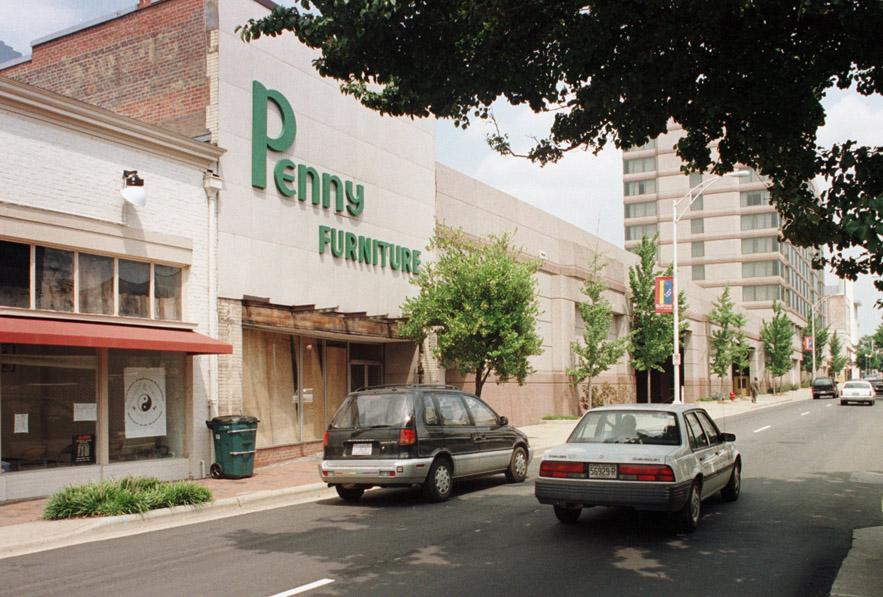

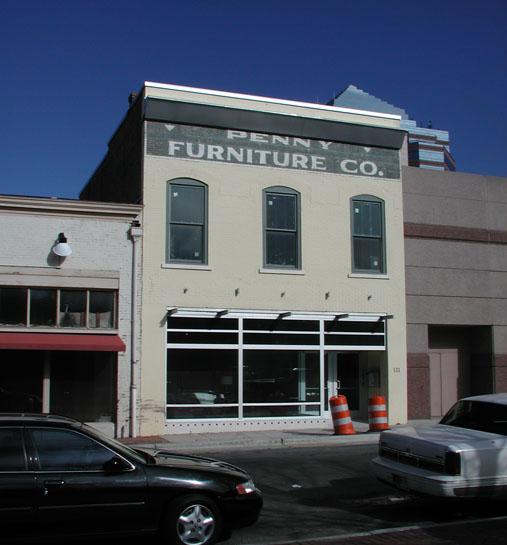

Comments
Submitted by Joe (not verified) on Fri, 2/2/2007 - 10:35pm
In walking by this buiiding today, what struck me about the cornice was that it looks somewhat like a gutter.
Submitted by Gary (not verified) on Fri, 2/2/2007 - 11:12pm
I think that what catches my eye is that the lettering for 'Penny' is shorter than the "Furniture Co" lettering below. Because the cornice is sort of outsized to begin with and it sits directly over these letters, it looks to me like the letters are being squished. This seems to exaggerate the size even further for me.
GK
Submitted by Anonymous (not verified) on Fri, 10/24/2008 - 1:42am
You can tell that "Penny" has always been shorter for some reason but that the cornice looks much bigger now than the original. I also liked the yellow brick better than white paint. They could paint the cornice and it would not stand out so much.
Add new comment
Log in or register to post comments.